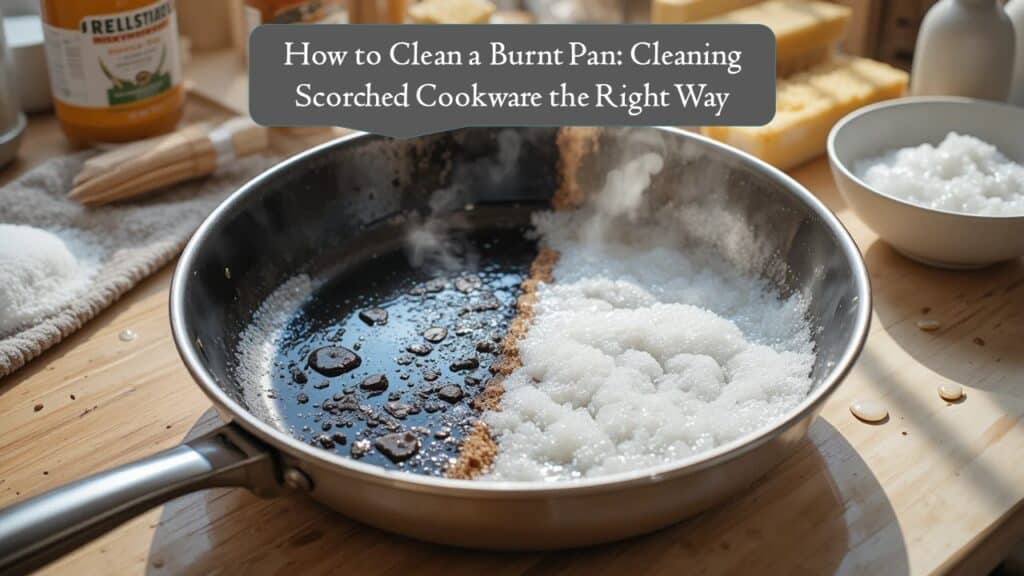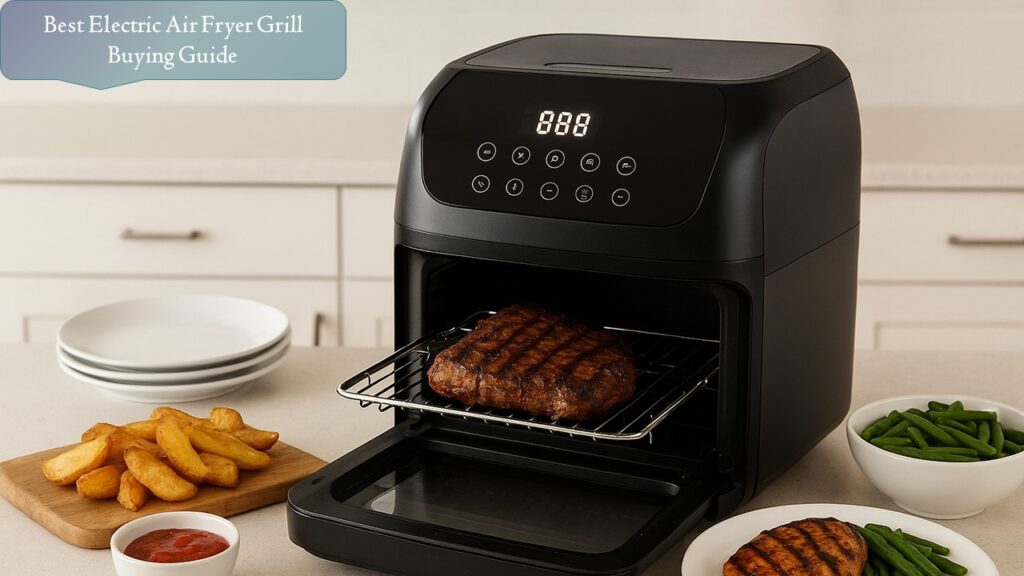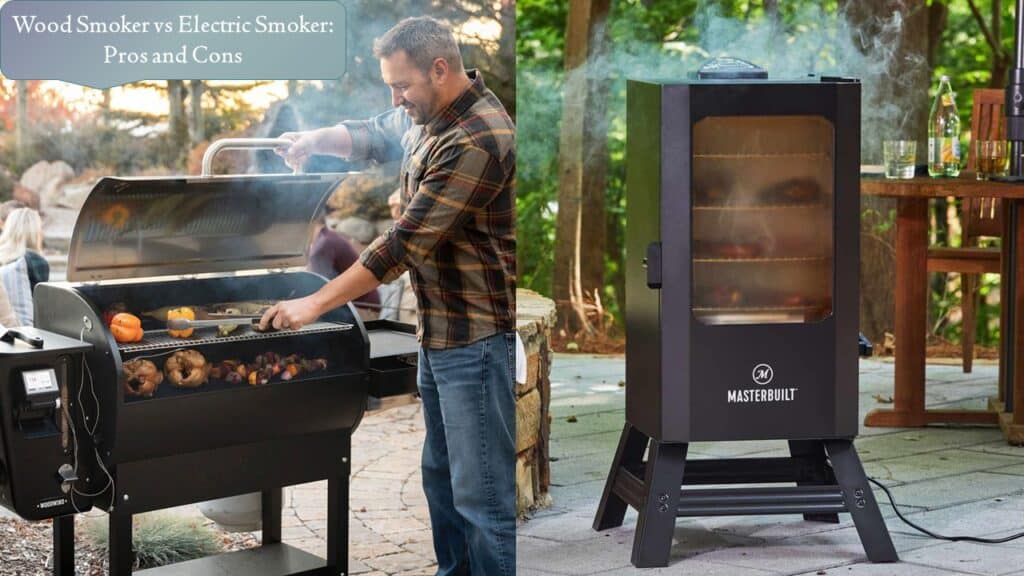Every home cook has been there — you turn your back for a minute, and suddenly that beautiful sauce or stir-fry turns into a stubborn, burnt mess stuck to the bottom of your favorite pan. Burnt cookware doesn’t just look bad; it can make even high-quality stainless steel or nonstick pans lose their shine and performance.
The good news? You don’t have to throw it out. Whether you’re dealing with a lightly scorched pan or a seriously blackened bottom, there are effective ways to clean it without damaging the surface. In this guide, we’ll explore the best methods to restore your cookware, from gentle everyday fixes to deep-cleaning tricks that make even the worst burns disappear.
Why Pans Burn in the First Place?
Understanding why pans burn helps prevent future disasters. A few common reasons include:
- High heat for too long: Even stainless steel has limits; high temperatures cause food and oil to carbonize.
- Thin cookware: Cheap, thin pans don’t distribute heat evenly, leading to hot spots.
- Neglecting liquid: Cooking without enough oil or sauce allows food to stick and scorch.
- Getting distracted: One extra minute on the stove is all it takes!
No matter the cause, knowing how to clean your burnt pan properly can save you from costly replacements.
Check out this super-durable frying pan by All Clad:
- Experience professional-level cooking with this 10-inch stainless steel fry pan with lid, enhanced by All-Clad's D3...
Step-by-Step Guide: How to Clean a Burnt Pan?
Let’s go over several proven techniques — from natural solutions to heavy-duty cleaning — depending on the severity of the burn.
-
The Boiling Water and Baking Soda Method
This method works wonders for most burnt stainless steel or enamel pans.
You’ll need:
- Water
- 2–3 tablespoons of baking soda
- Wooden spoon or spatula
Steps:
- Fill the pan with enough water to cover the burnt area.
- Bring the water to a gentle boil on the stove.
- Add baking soda and let it simmer for 5–10 minutes.
- Use a wooden spoon to gently scrape away loosened burnt bits.
- Rinse with warm water and wash normally with dish soap.
Why it works:
The combination of heat and baking soda helps lift carbonized food without scratching or scrubbing aggressively.
-
Vinegar and Baking Soda Reaction
Perfect for stubborn scorch marks or burnt milk residue.
You’ll need:
- White vinegar
- Baking soda
- Sponge or non-abrasive scrubber
Steps:
- Pour about one cup of vinegar into the pan and bring it to a simmer.
- Remove it from heat and add 2 tablespoons of baking soda.
- Let the fizzing reaction sit for 5–10 minutes.
- Scrub gently in circular motions and rinse clean.
Bonus tip:
This method is especially effective for stainless steel cookware, restoring its shine while removing discoloration.
-
Salt and Lemon Scrub (for Gentle Cleaning)
Ideal for nonstick pans or cookware with delicate coatings.
You’ll need:
- Coarse salt
- Half a lemon (or bottled lemon juice)
Steps:
- Sprinkle salt over the burnt area.
- Squeeze lemon juice on top to create a mild abrasive paste.
- Let it sit for 10 minutes, then scrub gently with a soft cloth.
- Rinse and dry thoroughly.
Why it works:
The salt acts as a natural scrubber, while lemon juice’s acidity helps break down burnt residue and grease without harming the surface.
-
Cream of Tartar Method (for Stubborn Stains)
A professional secret for heavy discoloration and old scorch marks.
You’ll need:
- 1 tablespoon of cream of tartar
- 1 cup of water
Steps:
- Combine both ingredients in the pan.
- Bring to a simmer for 5–7 minutes.
- Allow to cool, then scrub lightly with a soft sponge.
- Rinse thoroughly and dry.
Cream of tartar’s mild acidic properties make it a safe alternative to harsh cleaners — especially useful for copper-bottomed cookware.
-
Dishwasher Tablets or Baking Soda Paste (Heavy-Duty Burn Fix)
For pans that look like they’ve been through a campfire, this deep-clean method works wonders.
You’ll need:
- Dishwasher tablet (or 2 tablespoons baking soda + a few drops of water)
- Hot water
- Soft sponge or nylon scrubber
Steps:
- Add hot water to cover the burn.
- Drop in a dishwasher tablet and let it dissolve for 30 minutes (or use baking soda paste).
- Scrub in circular motions to remove remaining residue.
- Rinse and repeat if needed.
This trick often restores even heavily scorched stainless steel pans to near-new condition.
Special Care by Material
Different cookware materials require slightly different care. Here’s how to treat each type safely:
| Cookware Type | Cleaning Tips |
| Stainless Steel | Use baking soda, vinegar, or cream of tartar; avoid steel wool to prevent scratches. |
| Nonstick (Teflon or Ceramic) | Never use abrasives. Stick to gentle lemon-salt or mild baking soda paste. |
| Cast Iron | Avoid soaking. Scrape gently, use coarse salt and oil to lift residue, then re-season the pan. |
| Copper | Use lemon juice and salt paste; polish with a soft cloth afterward. |
| Enameled Cookware | Avoid metal scrubbers; baking soda or cream of tartar works best for preserving the enamel surface. |
What to Avoid When Cleaning Burnt Pans:
- Metal Scouring Pads: These scratch most cookware surfaces.
- Bleach or Harsh Chemicals: Can discolor metal and weaken nonstick coatings.
- Excessive Force: Aggressive scrubbing can warp pans or remove protective layers.
- Prolonged Soaking (Cast Iron): This can cause rust and damage the seasoning.
A gentle, step-by-step approach always works best — it may take a little patience, but your cookware will thank you for it.
Preventing Future Burns:
A clean pan is great, but prevention saves time and effort. Follow these simple habits to avoid burnt pans in the first place:
- Use medium heat: Most home cooking doesn’t need high heat — especially for nonstick cookware.
- Add oil before heating: Prevents food from sticking and burning early.
- Stir regularly: Especially when simmering sauces or stews.
- Choose quality cookware: Pans with thick bases distribute heat evenly.
- Deglaze after cooking: Adding a splash of water or broth to a hot pan loosens residue immediately.
When to Replace a Burnt Pan:
Sometimes, despite your best efforts, a pan might be beyond saving. Consider replacing it if:
- The surface is warped or uneven.
- Nonstick coating is flaking.
- Persistent black spots remain after multiple cleanings.
A damaged surface not only affects performance but can also leach unwanted substances into food.
Final Thoughts:
Cleaning a burnt pan might feel daunting, but with the right method, almost any scorch can be reversed. Start gently with baking soda or vinegar, move up to stronger solutions if needed, and always consider your pan’s material before scrubbing.
The key takeaway? Burnt doesn’t mean ruined. A bit of patience and the right tools can restore your favorite cookware — so you can get back to what really matters: cooking delicious meals without fear of burnt bottoms.








